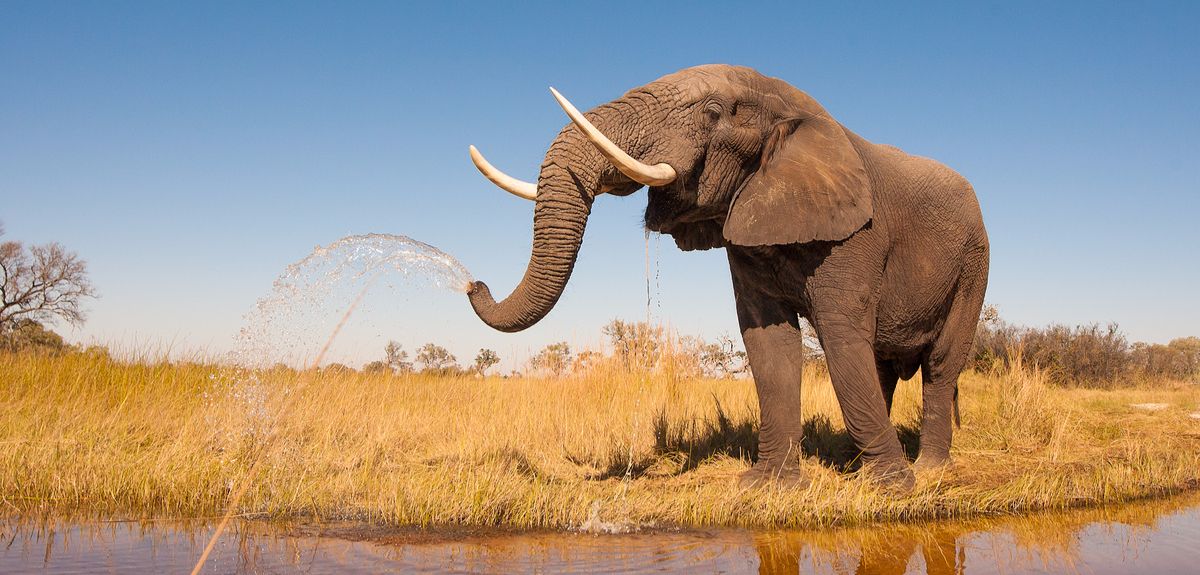
Image credit: Shutterstock
Clues in poached elephant ivory reveal ages and locations of origin
More than 90% of ivory in large seized shipments came from elephants that died less than three years before, according to a new study led by the University of Utah and involving the University of Oxford.
Combining radiocarbon ivory dating with genetic analysis provides a picture of when and where poachers are killing elephants – useful tools in the ongoing battle against illegal animal product trade.
The study is published in the journal PNAS.
Lesley Chesson, study co-author and CEO of the isotope analysis company IsoForensics, said: 'This work provides for the first time actionable intelligence on how long it's taking illegal ivory to reach the marketplace. The answer is not long at all, which suggests there are very well developed and large networks for moving ivory across Africa and out of the continent.'
Thure Cerling, the study's first author and a professor of geology and geophysics at Utah, said: 'Apart from the actual killing, there's the trade on the ground before it gets to ports, the actual shipments through shipping containers, and then the problem of the demand side. This additional information can be helpful to people trying to address those issues.'
Despite efforts to stop the ivory trade, poaching claims an estimated 8% of African elephants each year, or around 96 elephants per day. Demand for elephant ivory and other illegal products derived from endangered animals has grown in Asia in recent years, opening a fresh battleground in the struggle against illegal ivory.
Bans usually allow the sale of ivory that was legally acquired prior to 1976, including heirloom or antique pieces. Confirming the age of those pieces, however, relies on proper documentation. Traders in illegal ivory sometimes use this clause as a cover, claiming that their wares are older than they really are.
The team applied radiocarbon dating and DNA analysis techniques to objectively estimate the age of samples in seized ivory shipments, as well as their geographical origin. Of the 231 samples collected, only one returned an age of greater than six years between the time of the elephant’s death and the seizure of the ivory (the lag time). Nearly all of the analysed ivory had a lag time of around two to three years, suggesting the shipments did not come from stockpiles or from old sources but rather that large shipments of ivory are likely to be composed of recently poached pieces.
In the study, seized ivory is classified as either originating in East Africa, the Tridom region of west-central Africa, West Africa, or Zambia. Additionally, samples were classified as having a rapid (less than 12 months), intermediate (12-24 months) or slow (more than 24 months) lag time. Ivory attributed to East Africa had a higher proportion of rapid-transit samples than the other regions, suggesting a strong distribution pipeline from the region. Ivory from Tridom was more likely to contain slow-transit ivory, and both West African and Zambian ivory exhibited intermediate lag times. This information can help law enforcement focus on the worst poaching regions and can also provide information on the health of elephant populations.
Dr Iain Douglas-Hamilton, a member of Oxford's Department of Zoology and founder of the conservation organisation Save the Elephants, helped design the research and bring the team together. He said: 'This multi-disciplinary team has combined its scientific talents to combat the ongoing ivory poaching crisis that threatens elephants. Dr Cerling's team has shown incontrovertibly that the surge of illegal ivory into world markets over the last decade comes from recently killed elephants – not old hoarded stockpiles – using exactly the same samples of seized ivory that Samuel Wasser of the University of Washington had used to locate the origin of the ivory using its DNA. Together, these techniques will further expose ivory trafficking networks to the arm of the law.'
The paper 'Radiocarbon dating of seized ivory confirms rapid decline in African elephant populations and provides insight into illegal trade' is published in the journal PNAS.
 Expert Comment: Chatbot-driven sexual abuse? The Grok case is just the tip of the iceberg
Expert Comment: Chatbot-driven sexual abuse? The Grok case is just the tip of the iceberg
 New study finds that stopping weight-loss drugs is linked to faster regain than ending diet programmes
New study finds that stopping weight-loss drugs is linked to faster regain than ending diet programmes